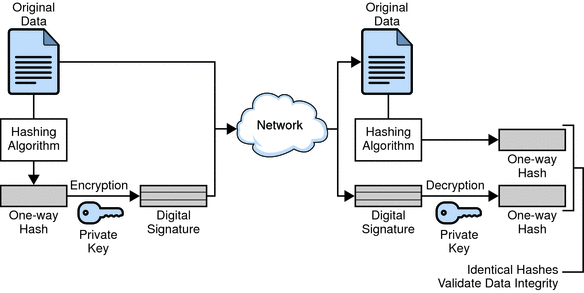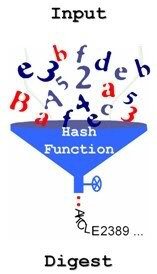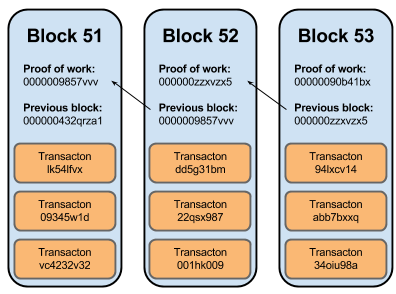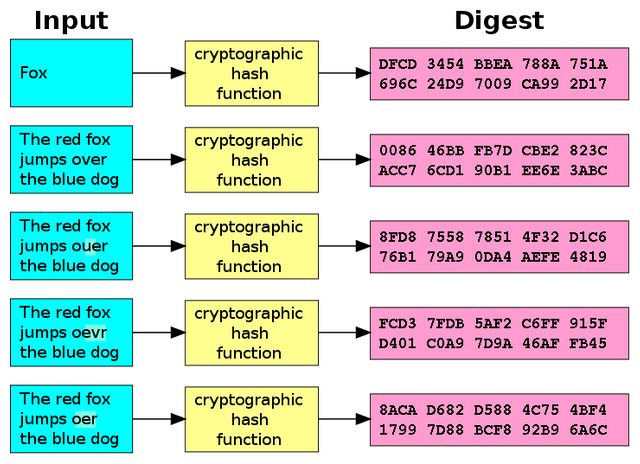Monetizing content requires tracking assets
Steemit's 7 day curation window
As you all know Steemit has a 7 day period in which you can catch upvotes, and if you're lucky and have good content even a whale or two. The first time it happened I was very excited! My hard work had paid off. It changes you, you really understand something when you have to explain it to others. Although I knew this from the learning pyramid it was all rather theoretical until I got this feedback. And it earned me real money as well.
Disclaimer: This is a rewrite of a post of which 90% got lost due to some weird upload failure. Only the first 10% was uploaded and I worked on it for something more than a week off and on. I'll be backing up my drafts from now on.
Monetizing elaborate content
To give an example of other content which could be monetize through Steemit let's focus on books for now. Writing blog posts is one thing but some of you are writing what looks like entire books here!
So releasing a chapter or bunch of pages of your book at a time (per post) is one way to monetize your work through Steemit. But if you would release a whole book, you might not earn enough to cover your costs simply because there wouldn't be enough time to read it.
Even if you were stubborn and wanted to do it this way anyway, maybe because you'd already written the book, is to have a huge audience and have the trust that your book is good. Steemians could of course write reviews about your book but then you'd have to strike a deal with them with each one separately. And past reviews are not a prognosis for future writing quality.
Evolution of content in limited time spaces
So what I'm aiming at is that not all content benefits from a small curation window. It does give incentive to other forms like releasing books or stories per chapter or keeping information up-to-date by re-releasing updated content. Programming questions are a good example of this because programming technology changes really fast. That what worked a year ago doesn't necessarily anymore now.
News is what's new everyday and thus should work well within a short curation period. But it's not a very good example if it stands just on its own like we are used to in mainstream media. You don't get much wiser just following their news. Unless you are building a narrative which leads to an ultimate disclosure and hence a good track record, news is often a waste of time.
Another examples are articles in magazines, easy to monetize but the incentive to create long lasting value diminishes. Once you have the answer there's no reason to reinvent the weel. We shall further see how the blockchain can help with this.
The best way to predict the future is to invent it.
― Walter Isaacson, Steve Jobs
Steemit is just an implementation of an idea. But with an idea this good, the more I get it, the more inspired I am to think further and use my imagination. These are turbulent times. I'd rather be excited then affraid of progress. You can be at ease when you know what could be waiting around the corner. Better yet is to invent the future as Steve Jobs once said so I plan to be a few steps ahead and share what I know. Hence this post.
Credit where credit's due
The same goes for other forms of art: take music or films for example. The work you have to put into them requires some form of prior investment or savings since there is a time delay between the production of the art in question and earnings. Sometimes it can take years to be recognized and that is not counting studies. That said I also think it is fair to expect to earn something for the exposure of another person's art. So the art is to find the right balance between the originator of the work you are exposing and yourself; who put work into learning about it, writing about it and marketing it in effect.
Curation on Steemit works pretty well although acquiring the visibility takes time. Trust is earned gradually and not all followers are equal. Spammers are flagged quickly. But is not easy to discern what is original and what is a cheap knock off or even blatant plagiarism. Luckily bots like @Cheetah are quickly to point out a link to what is, hopefully the original.
What if your work was tracked by @Cheetah?
Cheetah is aptly named! It is as fast as it's name implies and it rhymes with cheater. Nobody likes copycats (pun not intended but funny nonetheless) especially when they earn money on your work. But @Cheetah can only work on textual data, binary formats like music and video are unreadable by themselves and require proper translation. It would be very boring to read seemingly endless streams of zeroes and ones. No, humans have brains which translate these numbers into meaningful data and we forget that we see a moving picture but we see a woman walking, clouds in the sky or a city scape. We hear tension building up through music. The orchestra roaring at the right moment.
That which I signed is mine
Most of us are used to signing contracts like employee contracts or when opening a bank account and loans. Historically when you signed any agreement people knew it was yours because your name was on a piece of paper with a signature which was unique more or less. There were witnesses who could testify that you and any member of a party you contracted with were at that place and time.
Today in our modern times we use digital signatures to sign any message which is ours. And witnesses digitally sign our agreements like transactions on the bitcoin blockchain public ledger. Before that happens though any message needs to be uniquely identifiable at a glance and this is done via hashing.
Hashing
Hashing is a method to uniquely describe any piece of information, even as big as a book, by a few numbers. Hash functions have a few interesting mathematical properties:
- they describe any piece of information uniquely
- their output is a fixed length, regardless of the input information
- change anything ever so slightly in the input and the hash output changes dramatically
- You can't ever get the input back by studying the hash ouput
- they are fast enough to be practical
This makes them ideal for signing documents. The document is represented by the hash which gets signed cryptographically by the secret privately held key of the original author. Or witnesses. To check if the message we received is authentic and comes from the person who we think it is, we need to use the public key of that person to verify it's signature. This was where it went wrong with the capture of the Hansa darkweb market I wrote about previously.
Multiple signatures can be used but this is beyond the scope for now. By keeping the idea of one author per piece of art/book/document/music/video simple enough for most of us to understand we can gradually evolve into more complicated scenarios in the future. A future of which I'll be happy to write about somewhere next time.
A short history of the digital revolution
So in theory after enough work you have produced a piece of art. You make sure it is yours by signing it with your private key and everyone, in theory, should be able to verify with your public key that it is yours. However this does not prevent people from copying your work and signing it themselves. You need therefore witnesses who were first to witness that you are the one true author. They should also be reliable and trusted by as many people as possible.
In the past this lead to record companies, film production companies, distributors and cinema operators to get the rights for distributing and showing off your work. They were both the marketing guys and defended the rights of the work since they became your primary investor. But at a cost. Some of them grew into mighty powerhouses which dictated what the market liked and what not. Silly people. Then came the internet. And when it was fast enough and the quality of the compression of data adequate, this power soon became history. When it was cheaper and easier to copy music with the invention of the mp3 format the incentive to buy music was declining.
But now some artist earned even less because his work could be easily copied and now rights could not be easily enforced on a decentralized internet. On the other hand many crowdfunding sites like Indiegogo made it possible to fund projects without giving away the rights to your work and having to defend your artistic direction. But the copy protection issue stayed.
A public immutable database
What you need is a central place where all records of your art and assets are stored but without anyone able to tamper with the data. With the advent of bitcoin I and many others at first didn't recognize the true genius of the underlying distributed ledger. Which is called the blockchain. It is central in that there is only one for each application like the bitcoin digital currency. But multiple copies exist for this database which are kept in sync so that no one can tamper with it. Hence the term decentralized.
This tamper proof public immutable database is called a block chain because blocks of data, which are constantly added by users, are hashed and the hashes are digitally signed so that the previous block is the input for the next block and so forth. Hence the term block-chain as in a chain of blocks.
The blocks of data are in bitcoin's case transactions; people sending tokens called bitcoins to other people as a form of payment. No one can use any token more than once since every transactions is recorded, and once there are enough the whole block of transactions are hashed and signed with the previous block also as an input, which should result in an unbreakable chain.
More analogue digital fingerprinting
So you would think that for signing our work a hash would uniquely identify it and by siging that hash with our signature would forever designate us as the author. But there is a problem with the hash function, it's greatest strength is also it's greatest weakness: change one tiny bit and the whole hash is different. Take for example a piece of music: adding a little noise can be imperceivable by the listener. As when you make a copy of your precious vinyl onto a digital format. In the eyes of a human it is still the same track but to our little hash function it is totally different!
Acoustic fingerprints are not bitwise fingerprints, which must be sensitive to any small changes in the data. Acoustic fingerprints are more analogous to human fingerprints where small variations that are insignificant to the features the fingerprint uses are tolerated. One can imagine the case of a smeared human fingerprint impression which can accurately be matched to another fingerprint sample in a reference database; acoustic fingerprints work in a similar way.
One way to tackle this problem is to chop up a a piece of art into meaningful pieces. Describing it in a mathematical way which mimics how humans perceive. This is called digital or in the case of music acoustic fingerprinting.
Sites like YouTube can scan files and match their fingerprints against a database of copyrighted material and stop users from uploading copyrighted files.
Microsoft PhotoDNA
PhotoDNA was designed to be able to compare altered images and see if they match to an original image. It does this by converting an image to grayscale, chopping it up into small squares and looking at specific features in those squares. If you look at a human face, body or an animal you can distinguish it from the background, even if it is a black and white photo. You do this unconsciously by noticing edges between light and dark. Just like you'd draw a stick figure or how cartoons are drawn.
If the edge is sharp it could be an eyebrow or piece of a zebra. If it is gradually fading it could be a shadow. The human visual system is very advanced and it can detect wether an image is an altered copy or subset of the original.
PhotoDNA overcomes that obstacle: Its use of “hash” matching technology can identify known illegal photos even if someone has altered them.
It works by converting images into a grayscale format, creating a grid and assigning a numerical value to each tiny square. Those numerical values represent the “hash” of an image, or its “PhotoDNA signature.” The program protects user privacy in that it doesn’t look at images or scan photos; it simply matches a numerical hash against a database of known illegal images.
So it doesn't matter if the image is resized, the colours are altered or titles and watermarks are added. And this is exactly what makes digital fingerprinting technologies like PhotoDNA compelling for use in asset tracking!
Copyright, fair use and incentives
Over 70 hours of new video are uploaded to YouTube every minute! Sadly, many of these uploads contain unlicensed material, very often music. As any content creator, I would like to be aware and to get compensated for the unauthorized use of my music.
There's a wealth of data on the internet which is being used by others to make their point. Now that I have demonstrated the needs for content creators and that the basic technological building blocks already exist, it is up to us to put them together.
I will share a personal vision. I have an account on SoundCloud and I've attempted to collaborate with other musicians. I have also made lots of beginnings or parts which could be used by others but I have not found the time either to finish them or share or monetize them with others. Largely because I don't have an incentive to do so. Sometimes the best things happen when you just fool around but the road to perfection is hard. Somehow it seems that the last 10-20% require 50% of the total work or more.
There are many more examples. People taking parts of video material to make a documentaries or video clips to music. There are people who release lots of interviews which someone else might use to quote to add to the foundation of his story. But because the technology is not yet integrated it is hard to track your assets. Or on the flip side your videos are taken down because of some vague copyright claim.
The MUSE project
Steemit has demonstrated how content monetization works. I'm very curious about the #MUSE project. I hope that'll one day be able to use assets from others and share mine. And if a collaboration takes of that each gets a share of the pie because every part of it was in a blockchain and smart contracts ensured the value of these assets!
But it's not just about money. I'd be also delighted to find my work reused, remixed or that it inspired someone. And I hope that pictures I have chosen as album art might bring at least some joy to the author. Not to mention that there is hardly any discoverability in who used your art or might use it. After all, when we are all connected to the internet our work should stay connected to us in some way too.
I hope you liked what you have read. In that case I kindly ask you to resteem and upvote my content. Think about the ideas presented and please ask questions!
All the best,
Sources:










@nutela the emerging digital economy has both great potential and great risks.
Nurturing innovation and freedom is a challenge as institutional governance feel their monetary empire threatened...
Thanks for sharing, perhaps we can discuss "copyleft" and "free source" in a abundance peer model soon.
Sure let me know but I do think Steemit's model is here to stay. Everbody can vote according to their power. I just think the way Steemit is taking my attention is creating a lot of stress, some stuff which is really good needs time to sink in.
@nutela Ha-ha, content creators should be irked by some of the steemit mechanics - the week of upvote value is one controversy where good content could hold great value far longer than a week or month or year...
And timestamp sensitive posts I often fail to see until after expiration because I am challenge to search through the clutter that is steemit.
Whether steemit survives a blockchain social media competitor that is structurally focused on content creation is a open question. Being the first is not a guarantee of remaining in first place.
Ha-ha, I was simply thinking out loud - Chat soon - Cheers!
Exactly
Well I think Steemit will be excellent for blog posts and news but when you link 'long-time' content then it needs to be tracked so that it can receive credit. Does that makes sense?
Sort of like what @Cheetah does but then for any content like music and video, but also when you use samples or piece of images and video. It sounds a bit Orwellian but if you have put long hours into your work you deserve credit when people are using your work. Maybe not forever but with some easing-out curve when you've 'earned' enough to allow for newcomers to have a place in the market.
This is a good idea but if someone were to develop it as an addon, it would be a bigger project than just steemit warrants. The other side of the issue is even if I can see my art being remastered and resold under someone else's name, there's pretty much nothing I can do about it. For example, when we were putting together our post about our former model, we found her pictures that were legally purchased by ourselves on dozens local dating sites. The same goes for writing/music. If my work gets ripped off, I'd have to still go to court and while I'd have the proof on the blockchain, it'd be worthless unless I can actually get the case to court in the first place.
Expanding the curation window to more than 7 days will discourage new content. Right now we've got a setup where posting is encouraged. If the curation window was let's say 7 months, one good post could keep milking it the entire time without the creator posting anything else.
Good points you're making. I think you could think about the answer like this:
We're on Steemit for a reason; hopefully good content will be valued accordingly and the rightfull owners of the content will be therefore incentivized to continue providing quality content. The question is wether scammers and copycats can take the content from Steemit and monitize it elsewhere. I'm sure they can but I think they wouldn't receive as much value as on Steemit.
Crypto money is not going away, in fact the opposite is true; crypto has solved the internet money problem. It has many benefits; not regulated, no debt or interest jacking up the price, not taxed. I foresee a future where everything is going to be incentivized through crypto money because it works so well. Take open source software development. People will always want to do what they like. Artist are going to make art etc. But in the end the actions count. Nice words are almost for free but upvotes will actually mean something.
Big projects like films and music will have to find long term monetization opportunities to be a viable source of income. People will tend to flock there where there is true value. And because Steemit is a social platform it makes most sense that long term projects like film and music get promoted on Steemit. There just needs to be a mechanism to get those upvotes flowing to the people behind the film or music project.
I don't understand the implications of this but it sounds important. Have a spectactular day!!
Imagine that all that you do on the internet can be tracked, by you. You can see who uses your art, quotes your you, takes excerpts of your video and re-uses it. That way you get more exposure but also credit and money. Similar to the effect that you don't get much money when you copy and paste articles here because @Cheetah will expose you rather quickly.
Makes sense, probably best way for them to make money these days... a lot of artists are struggling I think!
Thanks for the encouragement! Maybe we'll build it, trying to get on WhaleShares beyondbitcoin talk!
Makes sense, Have a wonderful day.
Thanks, you too! :)
Thanks I like nutela
Excellent post nutela - I had just been discussing with a friend recently about the blockchain as a means of copy write for artists and musicians, I too am a musician/composer/producer.
So BIG thanks and definitely back up your future Magnum Opus posts... don't loose those gems!
thank you for your up votes and support by the way - really appreciated!
keep well
Thanks man! So how about you be on the #beyondbitcoin / whaleshares podcast too next Friday?
What do you get up to over at beyondbitcoin?! ... I did have a look, but i am not much wiser! - is it for helping business start ups and or musicians?
Check out DECENT it is what I imagined and when I went looking I found it haha
Well put together post, a great read, although tracking data personally is a nice touch when creating content, nowdays and in the future I do believe it will start to be much more difficult to make blogs without any input from outside resources. And quoting every outside source is truly a huge undertaking, in some circumstances, impossible, but soon as you pointed out, programs may find connections of where your free use music, pictures or media has been used would be a nice touch, and we will probably see more of in the coming years. peace out😀
Yes, I think you got it. The idea was to automate it, you use a piece of art and don't have to think to add credit, a bot will do that for you. And the original author will get some of the curation awards. That's the idea!
"very nice post" message from me a Student who needs extra income. Follow me @lordmp27
nice post follow and upvote my post..thanks
nice post follow and upvote my post..thanks
Great write up, followed for more :)
Thanks!
Well, it seems @aggroed and some people already created Steem Shelves for continuous content. Intro here